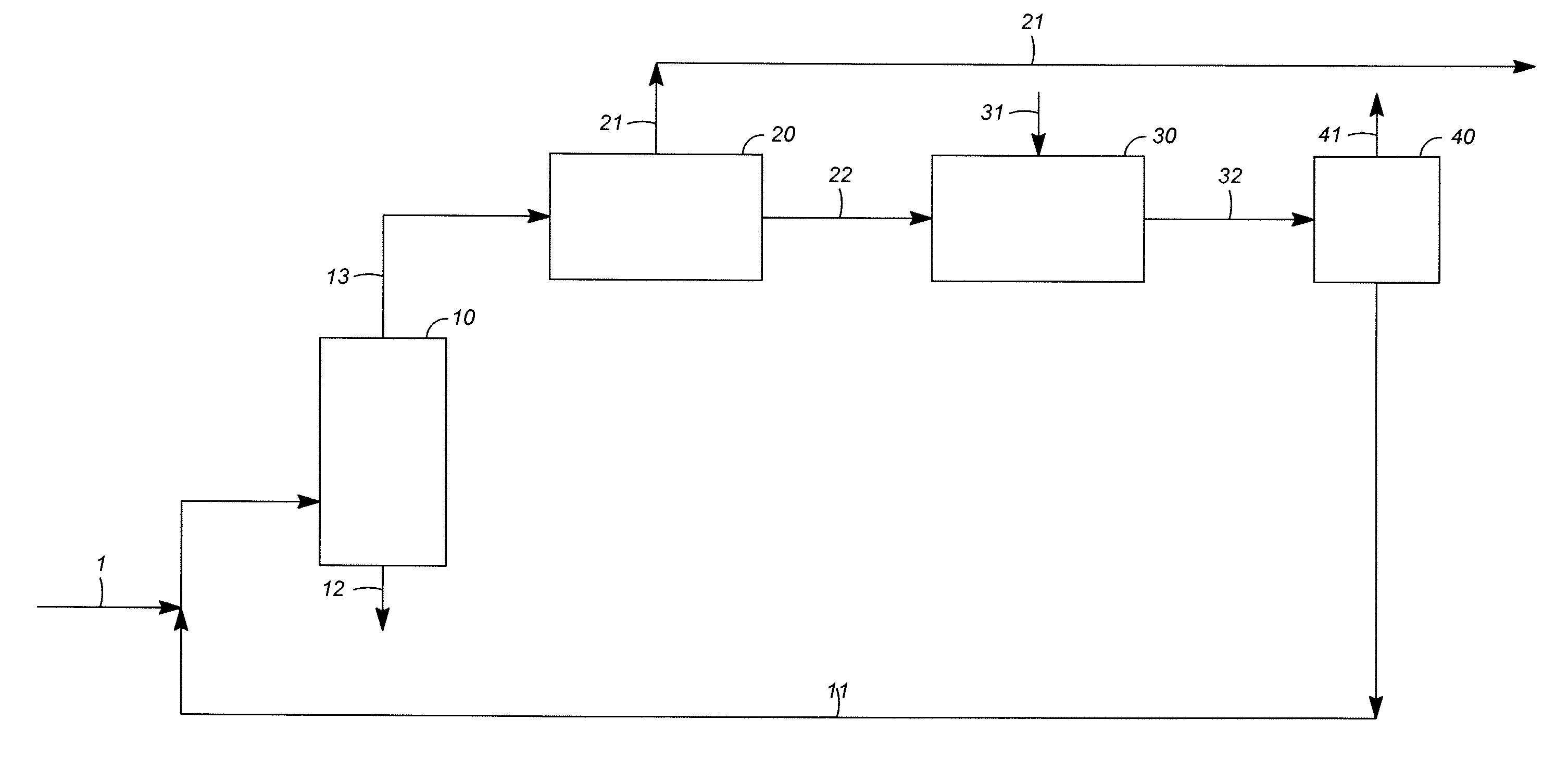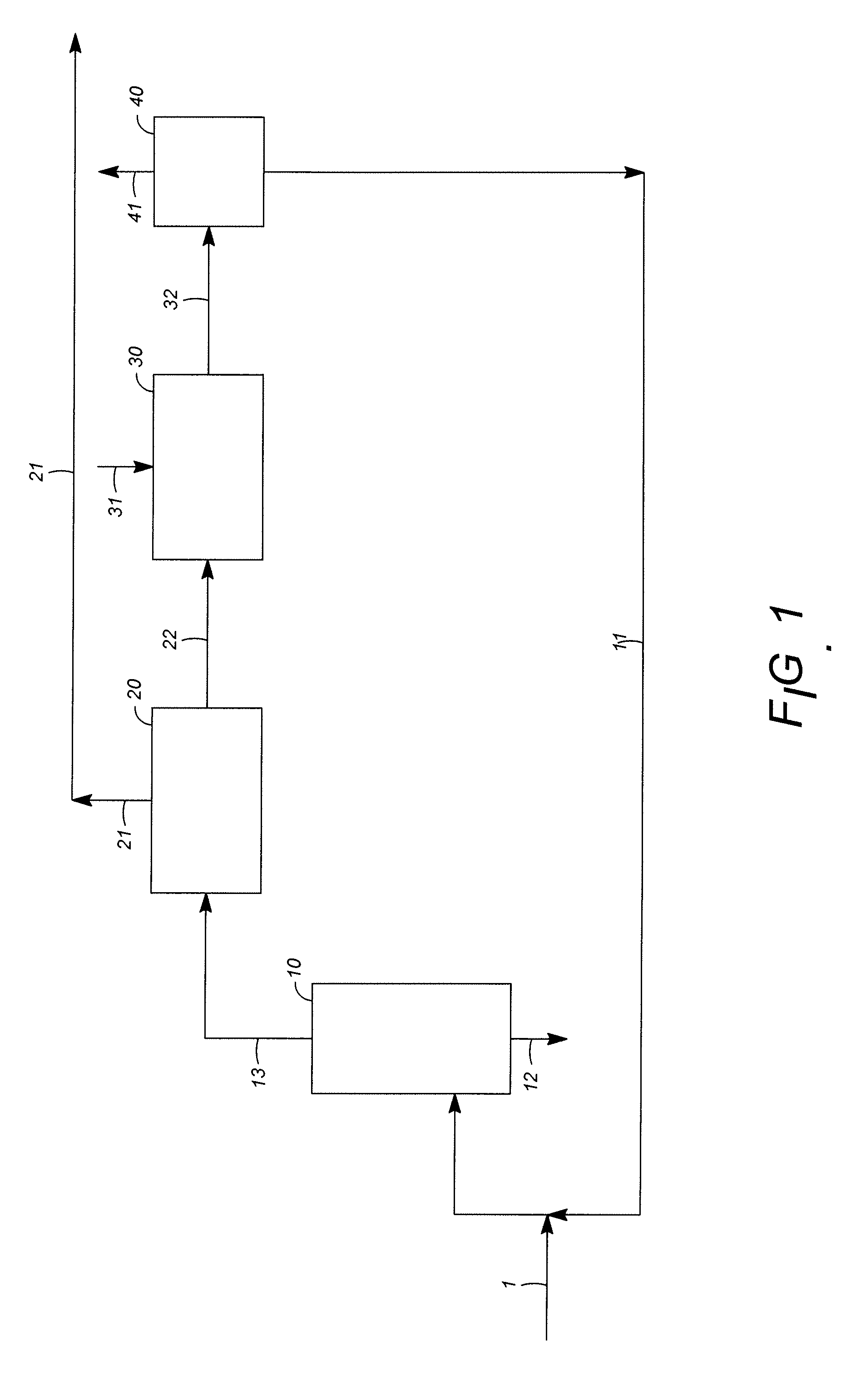Energy-efficient process for para-xylene production
a production process and para-xylene technology, applied in the field of catalytic hydrocarbon conversion, can solve the problems of difficult separation or conversion, inability to easily isomerize ethylbenzene to xylenes, and substantial csub>9/sub>+ aromatics in the isomerization or separation process, etc., to achieve the yield of desired xylene isomers and low cyclic losses
- Summary
- Abstract
- Description
- Claims
- Application Information
AI Technical Summary
Benefits of technology
Problems solved by technology
Method used
Image
Examples
example 1
[0043]A conversion test was conducted on a feedstock containing 80 wt.-% C8 aromatics and 20 wt.-% C9 aromatics including 8.5 wt.-% methylethylbenzenes, using a catalyst comprising platinum on aluminum-phosphate-bound MFI at a temperature of 400° C., pressure of 1.3 MPa and hydrogen / hydrocarbon ratio of 4. The conversion of methylethylbenzenes was 70%, and propylbenzenes were not detected in the product.
example 2
[0044]A conversion test was conducted on a feedstock comprising 66 wt.-% C9 and C10 aromatics including 17.3 wt.-% methylethylbenzenes, using a catalyst comprising rhenium on an alumina-bound mordenite base. Operating conditions comprised an average temperature of 372° C., pressure of 3.7 MPa and molar hydrogen / hydrocarbon ratio of 3.8. Overall conversion of C9 and C10 aromatics was 70.5 wt.-% and conversion of methylethylbenzenes was 81.3 wt.-%; propylbenzenes in the product amounted to less than 0.01 wt.-%.
example 3
[0045]An engineering study was carried out for the production of para-xylene from heavy reformate, comparing a process of the known art according to FIG. 3 and a process of the invention according to FIG. 4. The basis of the study was the production of 1,600,000 metric tons / annum of para-xylene. Comparative principal yields in thousands of tons / annum and comparative energy requirements were:
FIG. 3FIG. 4Reformate feed29333047Benzene429435Paraffinic raffinate412408Para-xylene16001600Net fuel consumption, MW24882Electric power, MW20.616.9
Capital costs also were considered, with estimated savings of about 7% in overall capital or over 30% in the fractionation section associated with the conversion units.
PUM
| Property | Measurement | Unit |
|---|---|---|
| Temperature | aaaaa | aaaaa |
| Temperature | aaaaa | aaaaa |
| Pressure | aaaaa | aaaaa |
Abstract
Description
Claims
Application Information
 Login to View More
Login to View More - R&D
- Intellectual Property
- Life Sciences
- Materials
- Tech Scout
- Unparalleled Data Quality
- Higher Quality Content
- 60% Fewer Hallucinations
Browse by: Latest US Patents, China's latest patents, Technical Efficacy Thesaurus, Application Domain, Technology Topic, Popular Technical Reports.
© 2025 PatSnap. All rights reserved.Legal|Privacy policy|Modern Slavery Act Transparency Statement|Sitemap|About US| Contact US: help@patsnap.com



